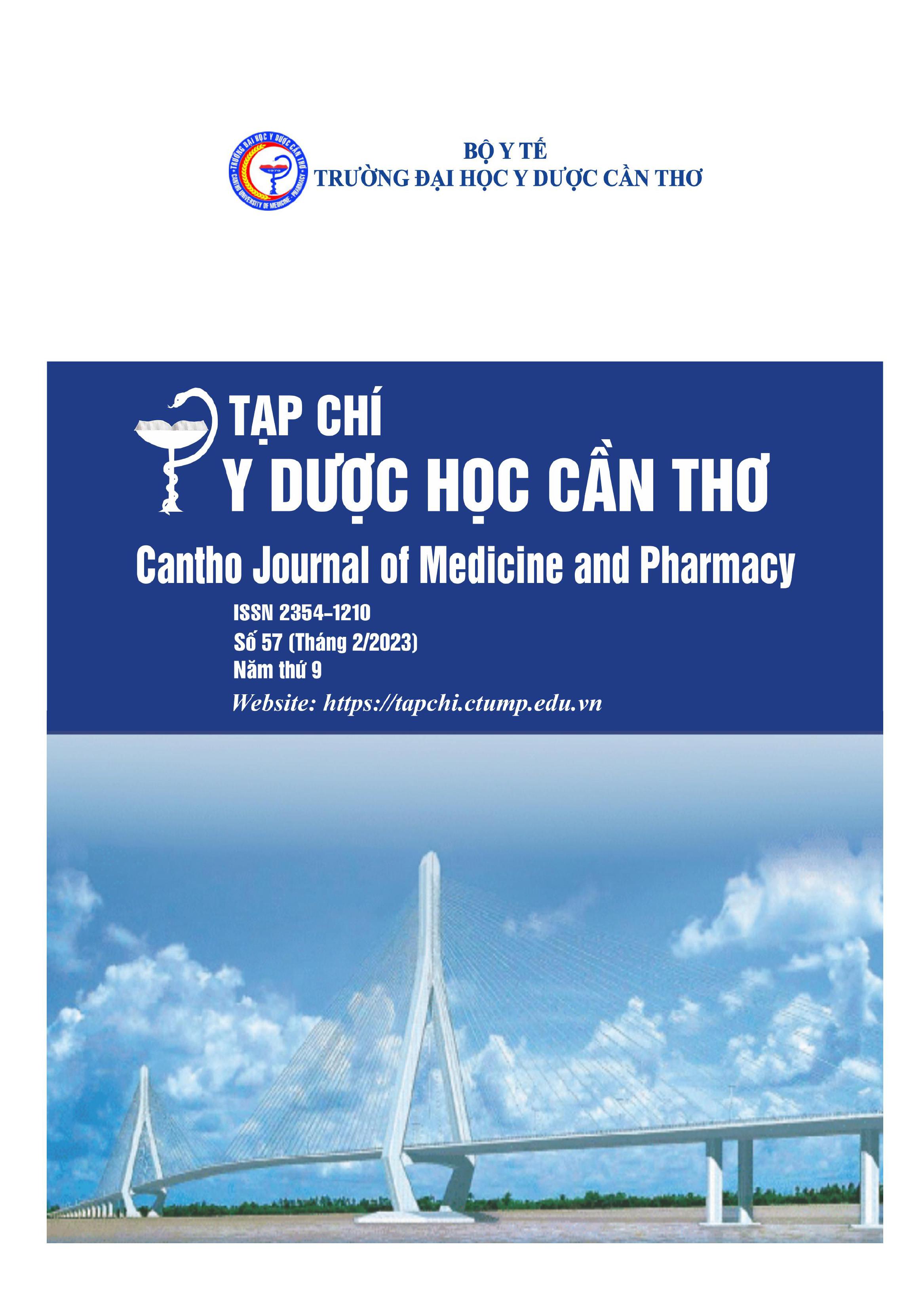ASSESSMENT OF TREATMENT RESULTS FOR PROLONGED LABO AT TWG LONG AN OBSTETRICS AND PEDIATRICS HOSPITAL IN 2021-2022
Main Article Content
Abstract
Background: Prolonged labor is one of the majors causing maternal death which counted for 2.8%. Prolonged labor signals an unfavorable birth, which can lead to obstetric complications for the maternal. Objectives: To evaluate the treatment results for prolonged labor at TWG Long An Obstetrics and Pediatrics Hospital in 2021-2022. Materials and methods: A cross sectional descriptive study with analysis was performed at TWG Long An Obstetrics and Gynecology Hospital in 2021-2022 reporting 100 cases with prolonged labor. The maternal was closely monitored in labor process and individually treated, noted the delivery process, neonatal and maternal status during and after birth. Result: there were 62 cases of vaginal delivery, accounting for 62.0%, the remaining 38 cases were cesarean section, accounting for 38.0%. There were 21 pregnant women having postpartum hemorrhage complications, accounting for 21.0%. The study noted that prolonged labor pregnancies underwent vaginal delivery faced higher risk of postpartum hemorrhage than group of cesarean section. The rate of blood loss over 500ml accounted for 21%, the average blood loss in pregnancy with prolonged labor was 341.5189.1ml. Infants weighing less than 3500 grams accounted for 68.0%, 13.0% of them had to be admitted at neonatal intensive care unit, and none of them died. Among 13 cases at the neonatal unit, there were 12 infants with neonatal respiratory failure accounting for 92.3% and 1 infant with neonatal sepsis accounting for 7.7%. Apgar index of infants after 1 minute < 7 points accounted for 13.0% and after 5 minutes according to Apgar table < 7 accounted for 2.0%. Uterine atony accounts for most cases of postpartum haemorrhage with a rate of 21/21 (100.0%) cases. Conclusion: Prolonged labor had a high rate of normal delivery and complications similar to cesarean section.
Article Details
Keywords
Prolonged labor, pregnancy, outcome
References
2. Nguyễn Thị Huyền Trang (2020), Đặc điểm chuyển dạ của các trường hợp mổ lấy thai vì chuyển dạ đình trệ tại bệnh viện quân y 175. Tạp chí Y học TP. Hồ Chí Minh, số 1, tập 25, tr. 40-47.
3. Vụ Sức khoẻ Sinh sản, Bộ Y tế, (2011), Điều tra tử vong mẹ, tử vong sơ sinh ở Việt Nam giai đoạn 2006-2007. Vụ Sức khỏe Bà mẹ Trẻ em phối hợp với Viện Chiến lược và Chính sách Y tế.
4. Fantu S (2010), Incidence, causes, and outcome of obstructed labor in Jimma University specialized hospital. Ethiop J Health Sci, 20(3), pp.145–151.
5. Gessessew A et al. (2003), Obstructed labor in Adigrat Zonal Hospital, Tigray Region, Ethiopia. Ethiop J Health Dev, 17, pp.175–180
6. Henok A (2015), A. Prevalence of obstructed labor among mothers delivered in Mizan-Aman general hospital, South West Ethiopia: a retrospective study. J Womens Health Care, 5 (4), pp.2167.
7. Thuillier C et al. (2018), Impact of recommended changes in labor management for prevention of the primary cesarean delivery. American Journal of Obstetrics and Gynecology, 218(3), pp.341-349.
8. Wube TT et al. (2018), Magnitude of obstructed labor and associated factors among women who delivered at public hospitals of western Harerghe Zone, Oromia, Ethiopia. Clin Med Res, 7, pp.135.
9. Wonde, T.E., Mihretie, A(2019), Maternofetal outcomes of obstructed labor among women who gave birth at general hospital in Ethiopia. BMC Res Notes 12, pp.128.


